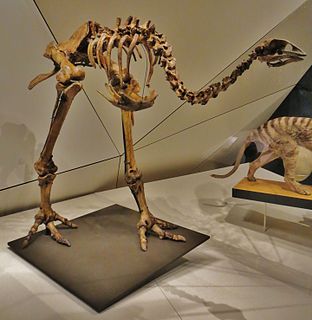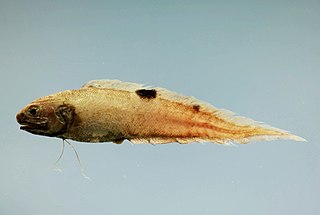
Marcus Licinius Crassus was a Roman general and statesman who played a key role in the transformation of the Roman Republic into the Roman Empire. He is often called "the richest man in Rome."

The Third Servile War, also called by Plutarch the Gladiator War and the War of Spartacus, was the last in a series of slave rebellions against the Roman Republic, known as the Servile Wars. The Third was the only one directly to threaten the Roman heartland of Italy. It was particularly alarming to Rome because its military seemed powerless to suppress it.

The Battle of Carrhae was fought in 53 BC between the Roman Republic and the Parthian Empire near the ancient town of Carrhae. An invading force of seven legions of Roman heavy infantry under Marcus Licinius Crassus was lured into the desert and decisively defeated by a mixed cavalry army of heavy cataphracts and light horse archers led by the Parthian general Surena. On such flat terrain, the Legion proved to have no viable tactics against the highly-mobile Parthian horsemen, and the slow and vulnerable Roman formations were surrounded, exhausted by constant attacks, and eventually crushed. Crassus was killed along with the majority of his army. It is commonly seen as one of the earliest and most important battles between the Roman and Parthian Empires and one of the most crushing defeats in Roman history. According to the poet Ovid in Book 6 of his poem Fasti, the battle occurred on the 9th day of June.

Orodes II, was King of Kings of the Parthian Empire from 57 BC to 37 BC. He was a son of Phraates III, whom he murdered in 57 BC, assisted by his elder brother Mithridates IV. The two brothers quickly fell out and entered into a dynastic struggle, in which Orodes was triumphant.

Monoclonius is a dubious genus of herbivorous ceratopsian dinosaur found in the Late Cretaceous layers of the Judith River Formation in Montana, United States, and the uppermost rock layers of the Dinosaur Park Formation in Alberta, Canada dated to between 75 and 74.6 million years ago.

The cusk-eel family, Ophidiidae, is a group of marine bony fishes in the Ophidiiformes order. The scientific name is from the Greek ophis meaning "snake", and refers to their eel-like appearance. True eels, however, diverged from other ray-finned fish during the Jurassic, while cusk-eels are part of the Percomorpha clade, along with tuna, perch, seahorses, and others.

The eastern moa, Emeus crassus, is an extinct species of moa. When the first specimens were originally described by Richard Owen, they were placed within the genus Dinornis as three different species, but, was later split off into their own genus, Emeus. E. crassus is currently the only species of Emeus, as the other two species, E. casuarinus and E. huttonii are now regarded as synonyms of E. crassus. It has been long suspected that the "species" described as Emeus huttonii and E. crassus were males and females, respectively, of a single species. This has been confirmed by analysis for sex-specific genetic markers of DNA extracted from bone material; the females of E. crassus were 15-25% larger than males. This phenomenon — reverse size dimorphism — is not uncommon amongst ratites, being also very pronounced in kiwis.

The Camallanida are an order of nematodes.

Unio crassus, the thick shelled river mussel, is a species of freshwater mussel, an aquatic bivalve mollusk in the family Unionidae, the river mussels.

Sundevall's jird is a species of rodent in the family of Muridae. It is found in Afghanistan, Algeria, Egypt, Iran, Iraq, Israel, Jordan, Kuwait, Libya, Pakistan, Morocco, Niger, Palestine, Oman, Saudi Arabia, Sudan, Syria, Tunisia, Turkey, Western Sahara, United Arab Emirates, Bahrain and possibly Mali. Its natural habitat is hot deserts.

The tricolored brushfinch is a species of bird in the family Passerellidae. It is found in the Andes of central Peru and Ecuador. Its natural habitats are subtropical or tropical moist montane forests and heavily degraded former forest.
Euastacus crassus is a species of southern crayfish in the family Parastacidae. It is commonly known as the Alpine spiny crayfish.
Marcus Licinius Crassus, grandson of the triumvir Marcus Licinius Crassus, was a Roman Consul in the year 30 BC as the colleague of Octavian. He was best known for his successful campaigns in Macedonia and Thrace in 29–27 BC, for which he was denied customary military honors by Octavian.

Spartacus was a Thracian gladiator who, along with Crixus, Gannicus, Castus, and Oenomaus, was one of the escaped slave leaders in the Third Servile War, a major slave uprising against the Roman Republic. Little is known about him beyond the events of the war, and surviving historical accounts are sometimes contradictory. All sources agree that he was a former gladiator and an accomplished military leader.

Scincosaurus is an extinct genus of nectridean lepospondyl within the family Scincosauridae.

Spectrunculus is a genus of cusk-eels found in the Atlantic and Pacific Oceans.
Titanogomphdon is an extinct genus of diademodontid cynodonts from the Middle Triassic Omingonde Formation of Namibia. It is known from a single partial skull that was described in 1973 from the Omingonde Formation. The type and only species is Titanogomphodon crassus. At about 40 centimetres (16 in), the skull of Titanogomphodon was significantly larger than that of its closest relative, Diademodon. Its teeth are similar to those of another group of cynodonts called Traversodontidae, but the similarities are likely the result of convergent evolution. Aside from its larger size, Titanogomphodon differs from Diademodon in having a bony projection on the postorbital bar behind the eye socket.
Mimeosaurus is an extinct genus of iguanian lizard from the Late Cretaceous of Mongolia. It is part of an extinct family of iguanians called Priscagamidae, and was the first priscagamid to have been described, having been named by American paleontologist Charles W. Gilmore in 1943. Currently only one species, the type species Mimeosaurus crassus, belongs within the genus. A second species, M. tugrikinensis, was named in 1989, but later studies argued that the specimens on which the new name is based are not sufficiently different from M. crassus specimens to warrant being classified as a separate species. Mimeosaurus is unique among iguanians in having premaxilla bones at the tip of the snout that are reduced in size, as well as having two pairs of enlarged canine-like teeth in the maxilla.

Neobythitinae is a subfamily of cusk eel from the family Ophidiidae. They are mostly fishes of deeper waters, occurring from the continental shelf down to as deep as 8,370 metres (27,460 ft) at the bottom of the Puerto Rico trench where the deepest known fish, Abyssobrotula galatheae, has been taken.
Eugonatonotus is a genus of decapods belonging to the family Eugonatonotidae.














